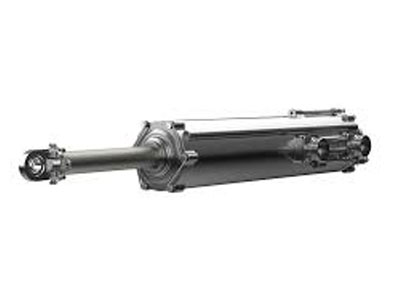How Do Pneumatic Controls Work?
Key Takeaway
Pneumatic controls use compressed air to create and regulate movement within a system. Here’s how they work:
First, compressed air is supplied by an air compressor and stored in a tank. The air travels through pipes to a control device, such as a valve or damper. The flow of air is regulated to control air pressure, often using pressure regulators or valves that divert the air flow.
Sensors monitor the system, detecting changes in factors like temperature or pressure. This feedback helps the control system make adjustments. Based on the feedback, the system opens or closes actuators, which use diaphragms and springs to operate. Pneumatic control systems are commonly used in HVAC systems and are known for being economical and efficient, offering flexibility in controlling various operations.
Introduction to Pneumatic Control Systems
Pneumatic control systems operate by using compressed air as a medium to control various mechanical processes. These systems are known for their simplicity, reliability, and adaptability, making them ideal for industries ranging from manufacturing to transportation.
At their core, pneumatic controls manage the movement of air through valves, regulators, and actuators to control machinery. Unlike electrical systems, pneumatic systems are less prone to failure in extreme conditions, such as high temperatures or corrosive environments.
These systems provide control over a variety of actions, such as opening and closing valves, moving conveyor belts, or operating robotic arms. By regulating air pressure and flow, pneumatic controls ensure that industrial operations are both precise and efficient.

Role of Compressed Air in Control Mechanisms
Compressed air serves as the driving force behind pneumatic controls. Its ability to store energy and deliver it in a controlled manner makes it an ideal medium for powering industrial systems.
How It Works:
Air Compression: Atmospheric air is compressed using an air compressor, increasing its pressure.
Air Storage: The compressed air is stored in reservoirs or tanks, ready for use when required.
Air Distribution: Control valves direct the pressurized air to specific components of the system, such as actuators or cylinders.
The pressure and flow rate of the compressed air determine the speed and force of the mechanical motion generated. By fine-tuning these parameters, engineers can achieve precise control over machinery, ensuring efficiency and reliability in industrial operations.
Compressed air’s versatility and cleanliness make it a preferred choice in industries where maintaining a contamination-free environment is critical, such as food processing and pharmaceuticals.
Key Components of Pneumatic Controls
Pneumatic control systems consist of several essential components that work together to regulate air flow and pressure, enabling smooth and precise operations.
Air Compressor: Generates the compressed air required for the system.
Reservoir or Tank: Stores compressed air to ensure a steady supply during operation.
Control Valves: Direct and regulate the flow of air within the system. Types include solenoid valves, pilot-operated valves, and manual valves.
Regulators: Maintain consistent air pressure, ensuring the system operates within safe and efficient parameters.
Actuators: Convert the energy of compressed air into mechanical motion, driving tasks such as valve operation or linear movement.
Filters and Dryers: Remove impurities and moisture from the compressed air to prevent damage to system components.
Each component plays a critical role in ensuring the system’s efficiency and reliability. For instance, clean air free of contaminants extends the lifespan of components and enhances overall performance.
Regulating Pressure and Flow for Precise Control
Regulation of air pressure and flow is central to the functioning of pneumatic controls. Without precise control, the system’s efficiency and performance could be compromised.
Key Methods of Regulation:
Pressure Regulators: These devices adjust the pressure of the compressed air to meet the specific requirements of the application. Over-pressurization can damage components, while under-pressurization can lead to insufficient force.
Flow Control Valves: These valves regulate the flow rate of compressed air, controlling the speed of actuators and other mechanical components.
Directional Control Valves: By directing airflow, these valves enable motion in the desired direction, whether linear or rotary.
Proper regulation ensures that the pneumatic system operates smoothly and efficiently. For instance, in an assembly line, precise flow control can synchronize machinery movements, reducing errors and increasing productivity.
Additionally, well-maintained regulators and valves contribute to system safety, preventing abrupt movements or pressure surges that could pose risks to equipment or personnel.
Integration of Sensors and Actuators in Pneumatic Systems
Modern pneumatic control systems often integrate sensors and actuators to enhance precision and automation. This combination allows for real-time monitoring and adjustments, improving overall system performance.
Role of Sensors:
Pressure Sensors: Monitor air pressure levels, ensuring they remain within the desired range.
Flow Sensors: Track the rate of airflow, providing feedback for precise adjustments.
Position Sensors: Detect the position of actuators or moving parts, enabling accurate control.
Actuator-Sensor Collaboration: Sensors provide data to the control system, which then adjusts the operation of actuators to meet specific requirements. For example, in a robotic arm, sensors track position and speed, while actuators move the arm with precision.
This integration enhances the versatility of pneumatic systems, enabling them to adapt to complex tasks in industries like automotive manufacturing and aerospace engineering.
Conclusion
Pneumatic controls work by leveraging compressed air and a network of components, including valves, regulators, actuators, and sensors, to deliver precise and efficient motion. These systems are integral to automation, offering simplicity, reliability, and adaptability across a wide range of applications.
For engineers, understanding the principles of pneumatic controls and their components is essential for optimizing industrial processes. As technology advances, the integration of sensors and smart controls further enhances the capabilities of pneumatic systems, solidifying their role in modern automation.

